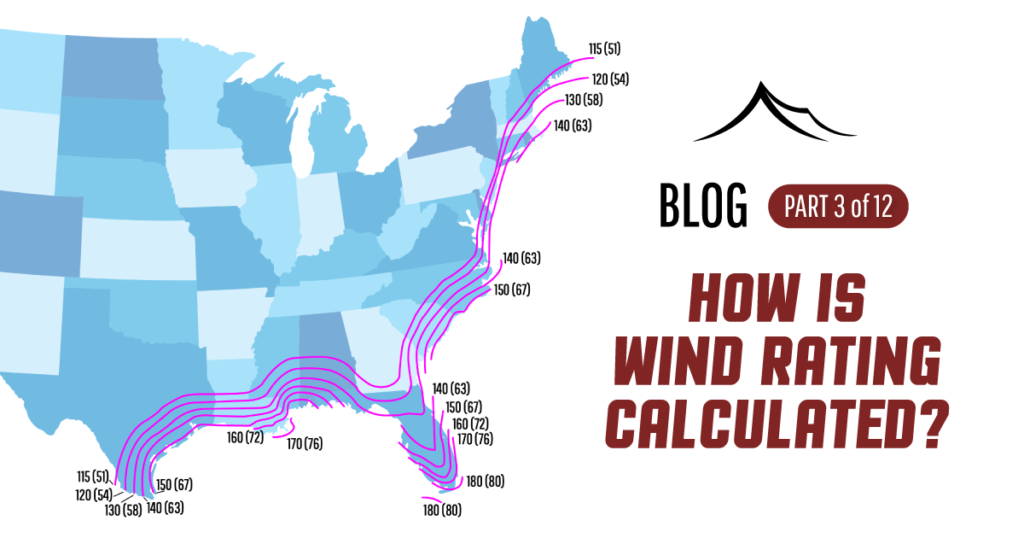Event Tents
How is Wind Rating Calculated?
Understanding the wind rating on a tent is critically important because it gives rental companies and event planners a baseline for how a tent will perform in certain conditions based on a number of factors that impact the integrity of the tent’s structure. At Tent Renters Supply, we provide engineering documents for engineered and non-engineered tents, to help our partners in the events, circus, and entertainment industries create events that are as safe as they are memorable.
In this blog article, we sit down with Matt Perra, engineer and owner of Tent Renters Supply, to understand the guidelines established by the ASCE 7-10 code that are used to determine a wind rating on a tent.
Factors used to calculate wind rating on tents
In order for a tent to satisfy the requirements most tent companies utilize the American Society of Civil Engineers Minimum Design Loads for Buildings and Other Structures as well as the International Building Code, utilizing the following factors:
- Wind Speed
- Exposure
- Risk Category
- Mean Recurrence Interval
- Velocity Pressure
Here we’ll dive into what each of them mean:
Wind Speed
This seems like an obvious and critical part of the whole equation, and it is based on guidelines created by the ASCE’s Basic Wind Speed for Occupancy Category II Buildings and Other Structures.

Using Tampa as a base example, the region is located between the 140 and 150 zone – meaning if someone wanted to build a high rise in Tampa, it would need to be built to effectively withstand 150 mile-per-hour wind.
“What we’re doing in the tent world is a little bit different. We’re, in most cases, are not designing to those numbers set by the American Society of Civil Engineers. What we’re designing to is backward-engineering that calculation. We’re taking our structure that we know is a certain condition and plugging those numbers in and coming up with a wind rating based on that.” – Matt Perra, Tent Renters Supply
Exposure Categories
Rated from B, C, and D, exposure categories are determined based on the mean roof height of the tent, ground surface roughness, and the upwind direction for a distance of at least 1,500 to 5,000 feet. Ground surface roughness can range from urban and suburban areas, to wooded areas, to open terrain, to even smooth mud flats, salt flats, and unbroken ice.
Using formulas, engineers are able to assign an exposure category for a tent structure that will describe how it is designed to perform in a given environment.
Loads of Loads
The determination of loads uses a formula that considers the weight, surface area, and any other additional leads that might be attached to the tent itself.
“There are things like dead loads, live loads, wind loads, flood loads and then snow loads. Think of it just in different types of forces that act on the tent beside the structure itself,” Perra says.
In general, the engineering documents provided by tent manufacturers do not include considerations such as items placed on the roof, hanging lights, or decorations that may be installed along with the tent.
Risk Category
Risk Categories are determined by a number of environmental-type factors that come together to describe a range of scenarios that a tent could effectively maintain its integrity under.
“The best way to describe risk category is by looking back at a disaster relief tent we produced for a company in Houston a few years back. They brought a tent to an area when they were doing disaster relief and because of that the particular use of the tent and what they were storing underneath it, it escalated from a risk category two, which is kind of an event party type thing, to a higher risk category.”
Therefore, the way an end user uses the tent can influence what rating it can be given – even if it’s anchored the same way, under the same conditions – the specifics of how it’s actually used dictates how the tent will perform.
“Therein lies I think a really good example of the challenge as manufacturers that we have where it’s a balance of the product specifications and the environmental variables and in how the tent is used to come to use that really come up with the true number.”
What is the Wind Rating on Your Tents?
The National Weather Services defines “severe weather” at 38 miles per hour, which is the wind speed at which tents should be evacuated and taken down. However, many of the tents that we manufacture at Tent Renters Supply are wind-rated at 80 to 90 miles per hour.
“At the end of the day, when you talk to customers, when somebody has a tent that’s wind rated to 80-90 miles an hour they kind of look at you funny and go, “There’s no way I would ever let an event occur at that speed. I would take it down. It just doesn’t make a lot of sense, nor I think would anybody really want to be out in that type of wind condition, underneath a tent.”
At Tent Renters Supply, we have the knowledge and experience manufacturing engineered and non-engineered tents for our clients throughout the country. We provide the generic guidelines to allow our customers to make informed decisions about where to install their tent to certain specifications, by using the ASCE and International Building Codes as foundational guidelines.
If you have any questions about engineered tents, wind ratings, or need a custom tent manufactured for your business or event, contact Tent Renters Supply for a quote.

